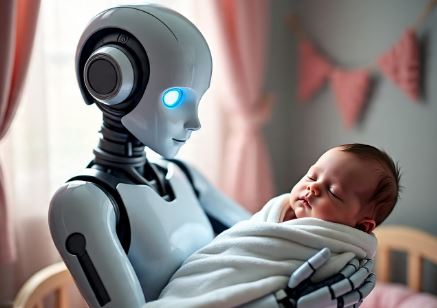Our Terms & Conditions | Our Privacy Policy
World’s first humanoid robot ‘may give birth to a human baby,’ scientists claim
The world’s first humanoid robot surrogate could one day give birth to a live baby, according to scientists in China.
Researchers are reportedly developing technology designed to replicate pregnancy from conception to delivery, with the fetus growing inside an artificial womb and receiving nutrients through a tube. After nine months, the robot could deliver a baby, said Zhang Qifeng, founder of Kaiwa Technology in Guangzhou.
Zhang, a Ph.D. graduate from Nanyang Technological University in Singapore, claimed the technology is already in a “mature stage.” The next step, he said, is implanting the system in the robot’s abdomen so that it can interact with humans to simulate pregnancy.
A prototype of the humanoid is expected to be sold next year for around £10,000 (100,000 yuan). Reports in Chinese media said the robot is designed to mimic the entire gestation process, although details about how fertilisation will occur remain unclear.
Throughout the pregnancy, the fetus would develop inside the robot’s body in a womb-like environment filled with artificial amniotic fluid. Scientists previously achieved a similar breakthrough when they kept premature lambs alive in an artificial “biobag” for weeks.
The innovation has already triggered legal and ethical debate. Zhang said he is in discussions with Guangdong provincial authorities to draft policies and regulations. If successful, the technology could reshape reproductive science and help address rising infertility in China, where rates increased from 11.9 per cent in 2007 to 18 per cent in 2020.
Many critics have called the project “problematic,” saying it deprives a fetus of maternal connection and overlooks biological processes like hormone secretion. Feminist writer Andrea Dworkin warned such technology could mean “the end of women,” while researchers at the Children’s Hospital of Philadelphia cautioned it might “pathologise” pregnancy. Others argue it could instead spare women the risks and burdens of childbirth, opening new options for fertility and family planning.
PNN
Images are for reference only.Images and contents gathered automatic from google or 3rd party sources.All rights on the images and contents are with their legal original owners.



Comments are closed.